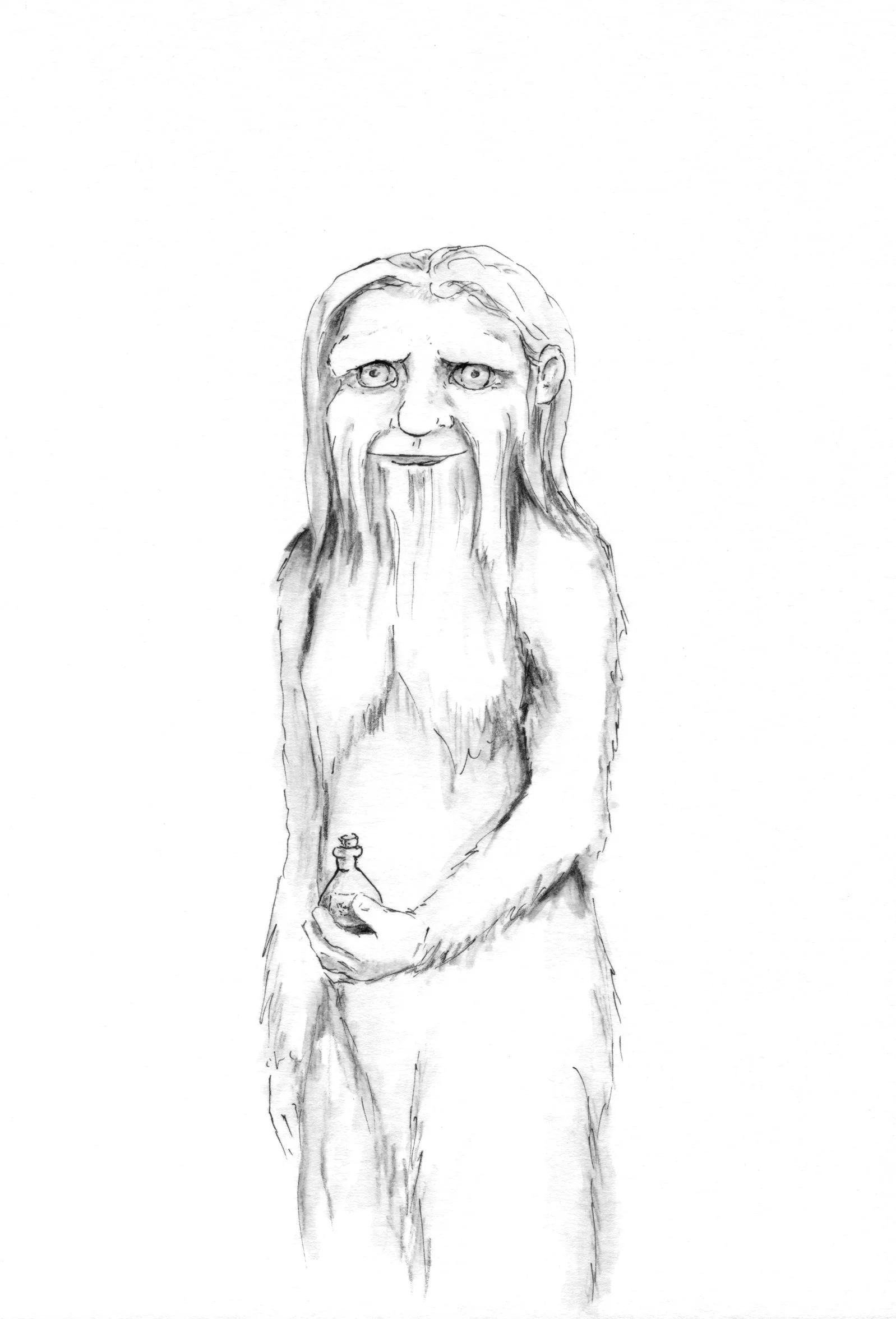
Ursus megalopus (Bigfoot bear)
Common names: Sasq’ets, Sasquatch, Bigfoot, Menk, Yeti
Basic info
Ursus megalopus shift
Size: Male Female
Human form 2.8m 2.5m
Bear form* 1.5m 1.2m
* Shoulder height, when standing on their hinds, they reach the same height as in their human form.
Mass: Male: 190kg | Female: 140
Lifespan: 85-110 (oldest known passed at 124)
Description: Ursus megalopus have two forms, bear and humanoid. Their bear form is very similar in appearance to that of a large brown bear (Ursus arctos), with a few key differences: the snout of the bear-form is shorter and wider than that of the average brown bear, and the eyes are larger. They also have longer claws than brown bears, these claws are basically a hardened form of the human-form fingers. Their coloration can differentiate, but is usually reddish brown, often darker towards the hair-roots with reddish tips.
The human-form is covered with fur, similar in type and coloration to the bear-form, with a longer mane. Ursus megalopus in human-form have round features, with large eyes, heavy brows and relatively wide mouths and noses. They are often described as ‘kind faced’ or having a wise expression. Both of which probably helped in their interactions with humans.
Like all Polymorphidae, Ursus megalopus are capable of partial shifting, and will often shift only their hands, either to grab hold while in bear-form, or to dig or defend themselves in human-form.
Habitat: The Ursus megalopus distribution is rather similar to that of brown bears. They can live in various types of environments, but chose adopt the habitat of brown bears since their presence makes it easier for them to keep hidden. However, the Ursus megalopus limit their habitat areas further, preferring secluded areas in high mountains or thick forestry where humans rarely visit. They often have a shelter during winter and wander about during summer. Some return to the same shelter year after year, while others prefer to settle anew every time.
Watch an introduction video about the Ursus megalopus
Habits & Culture
Ursus megalopus are generally solitary beings, with the exception of the periods of raising their young. The parents will often live together for the first 5-8 years of their youngling’s life, and separate afterwards. The youngling will remain with the mother until they are ready to live independently, usually when they are between 16-20 years old. Even after the parents separate, the father will keep in touch with the mother and child and the youngling may remain with the father for short periods of time. This is especially common if the mother wishes to have another child. The older youngling will remain with his father for a few weeks to a few months, and then rejoin his mother and the father of the younger offspring. It is very rare that the same male will father more than one offspring. Ursus megalopus have a preference for what they call ‘familial network’ over the ‘nuclear family’ concept common among humans, believing that this gives their child better support. Ursus megalopus do not live in communities, but they do keep close familial ties, and will usually keep contact with both their parents and their siblings throughout their lives.
Female Ursus megalopus holding a healing salve she has developed.
Ursus megalopus generally do not have possessions, as they spend most of their time wandering and do not find bags very convenient. Those who keep a permanent winter shelter do sometimes accumulate some possessions, from cooking utensils to books. Some enjoy using winter time for reading, others invest it in studies or research. There is one known Ursus megalopus family that has a communal lab where they develop plant based salves and potions, mostly for healing. Items for such research, and for cooking or reading, are generally provided by humans.
Ursus megalopus are solitary beings, and find human society fascinating, but noisy, even overwhelming. Which is why they shy away from human settlements and will never approach a group of humans. However, they are known to form long-lasting friendships with humans, friendships that can pass down generations, from parents to children. These connections are particularly known in the Americas, where many First Nations cultures have long held traditions that describe the Ursus megalopus as a large, peaceful humanoid creature. Still, the Ursus megalopus are very careful with giving their trust, and such rare friendships are always well kept secrets, showing mutual respect, and protecting the privacy of these gentle giants.






